ASM Shihavuddin
Weighted Contourlet Parametric (WCP) Feature Based Breast Tumor Classification from B-Mode Ultrasound Image
Feb 11, 2021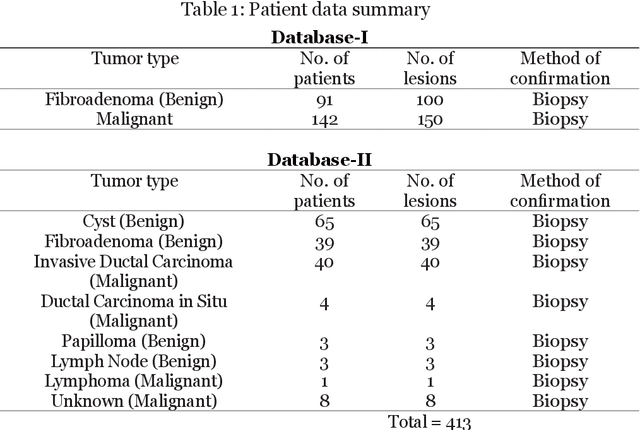

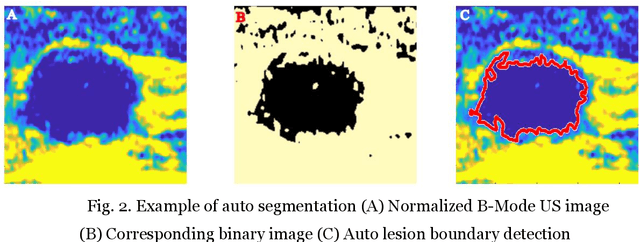
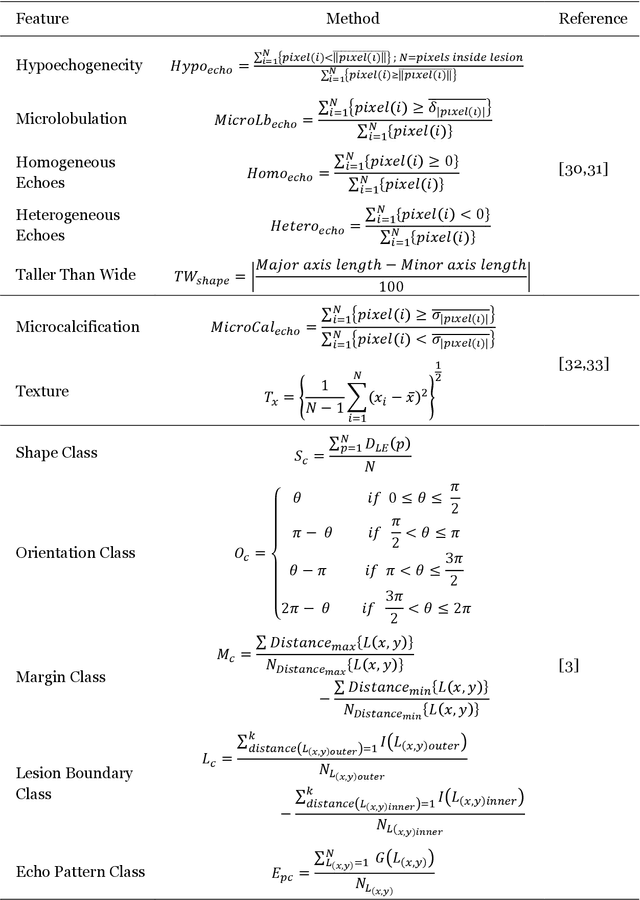
Abstract:Automated detection of breast tumor in early stages using B-Mode Ultrasound image is crucial for preventing widespread breast cancer specially among women. This paper is primarily focusing on the classification of breast tumors through statistical modelling such as Rician inverse Gaussian (RiIG) pdf of contourlet transformed B-Mode image of breast tumors which is not reported yet in other earlier works. The suitability of RiIG distribution in modeling the contourlet coefficients is illustrated and compared with that of Nakagami distribution. The proposed method consists of pre-processing to remove the speckle noise, segmentation of the lesion region, contourlet transform on the B-Mode Ultrasound image and using the corresponding contourlet sub-band coefficients and the RiIG parameters, production of contourlet parametric (CP) images and weighted contourlet parametric (WCP) images. A number of geometrical, statistical, and texture features are calculated from B-Mode and the contourlet parametric images. In order to classify the features, seven different classifiers are employed. The proposed approach is applied to two different datasets (Mendeley Data and Dataset B) those are available publicly. It is shown that with parametric images, accuracies in the range of 94-97% are achieved for different classifiers. Specifically, with the support vector machine and k-nearest-neighbor classifier, very high accuracies of 97.2% and 97.55% can be obtained for the Mendeley Data and Dataset B,respectively, using the weighted contourlet parametric images.The reported classification performance is also compared with that of other works using the datasets employed in this paper. It is seen that the proposed approach using weighted contourlet parametric images can provide a superior performance.
Towards Highly Accurate Coral Texture Images Classification Using Deep Convolutional Neural Networks and Data Augmentation
Mar 27, 2018
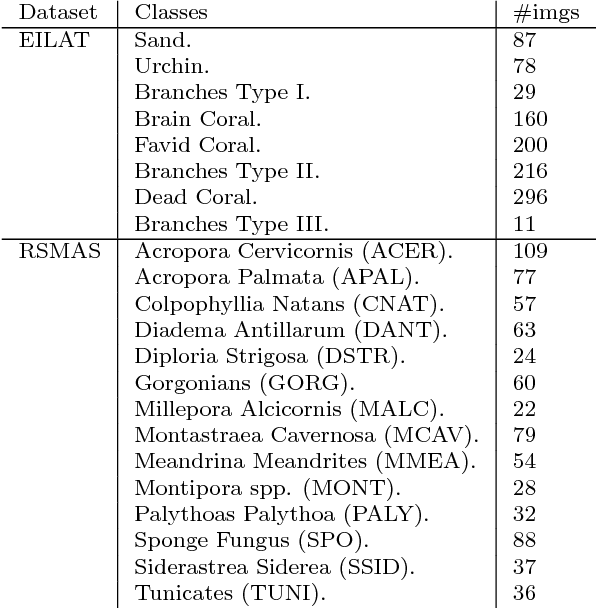
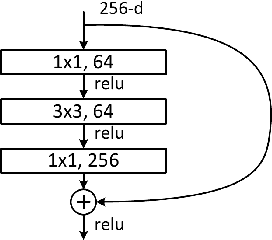

Abstract:The recognition of coral species based on underwater texture images pose a significant difficulty for machine learning algorithms, due to the three following challenges embedded in the nature of this data: 1) datasets do not include information about the global structure of the coral; 2) several species of coral have very similar characteristics; and 3) defining the spatial borders between classes is difficult as many corals tend to appear together in groups. For this reason, the classification of coral species has always required an aid from a domain expert. The objective of this paper is to develop an accurate classification model for coral texture images. Current datasets contain a large number of imbalanced classes, while the images are subject to inter-class variation. We have analyzed 1) several Convolutional Neural Network (CNN) architectures, 2) data augmentation techniques and 3) transfer learning. We have achieved the state-of-the art accuracies using different variations of ResNet on the two current coral texture datasets, EILAT and RSMAS.
 Add to Chrome
Add to Chrome Add to Firefox
Add to Firefox Add to Edge
Add to Edge